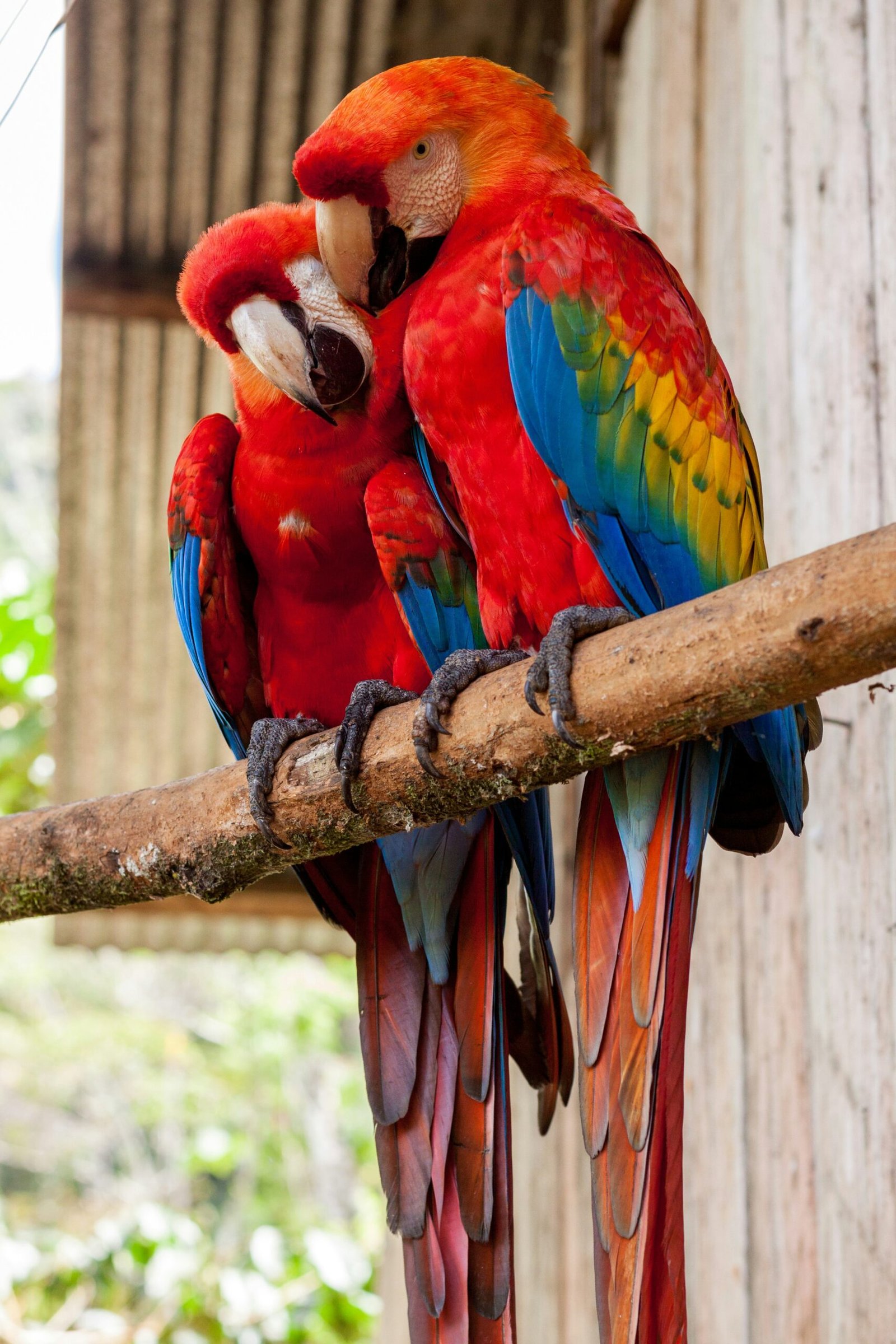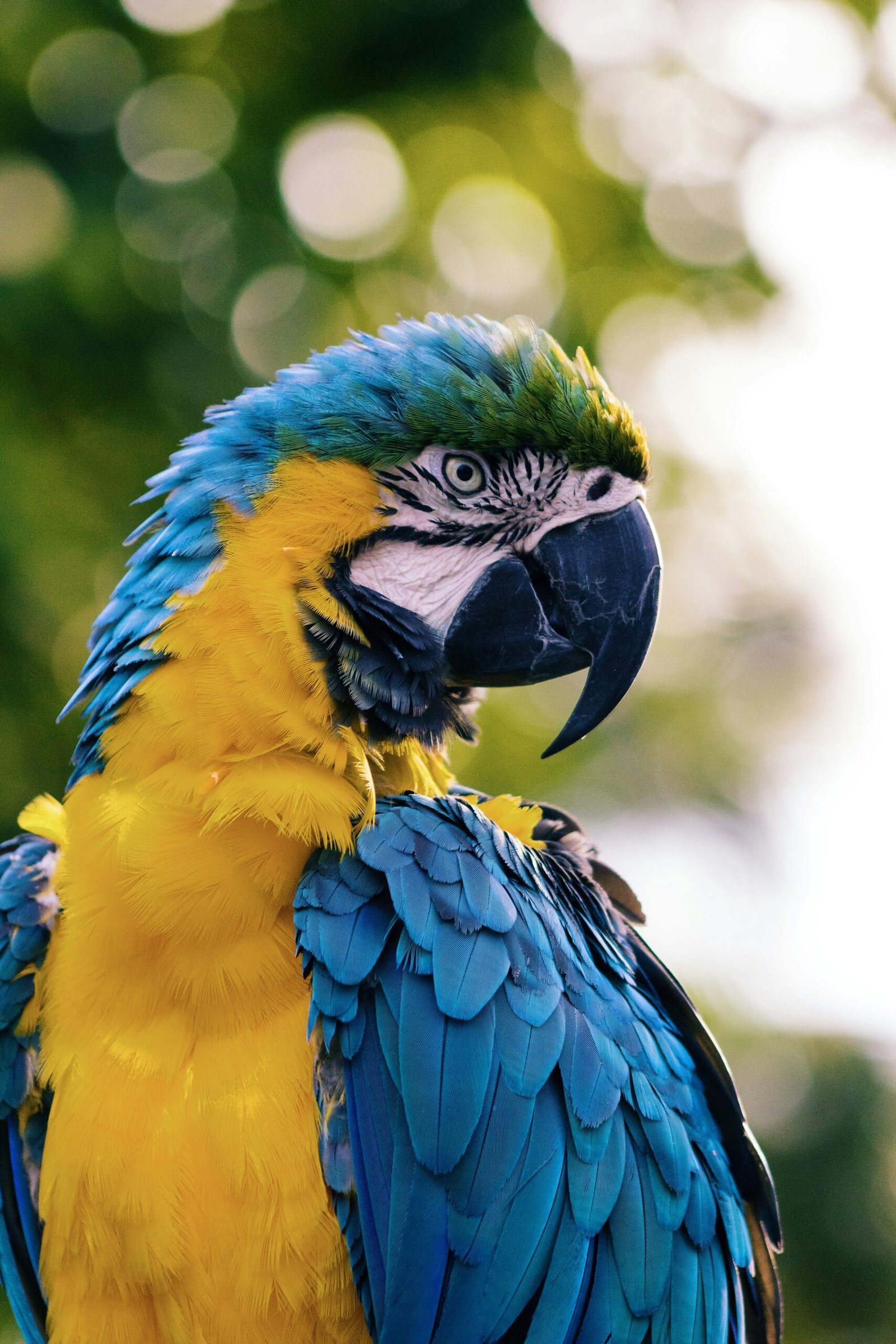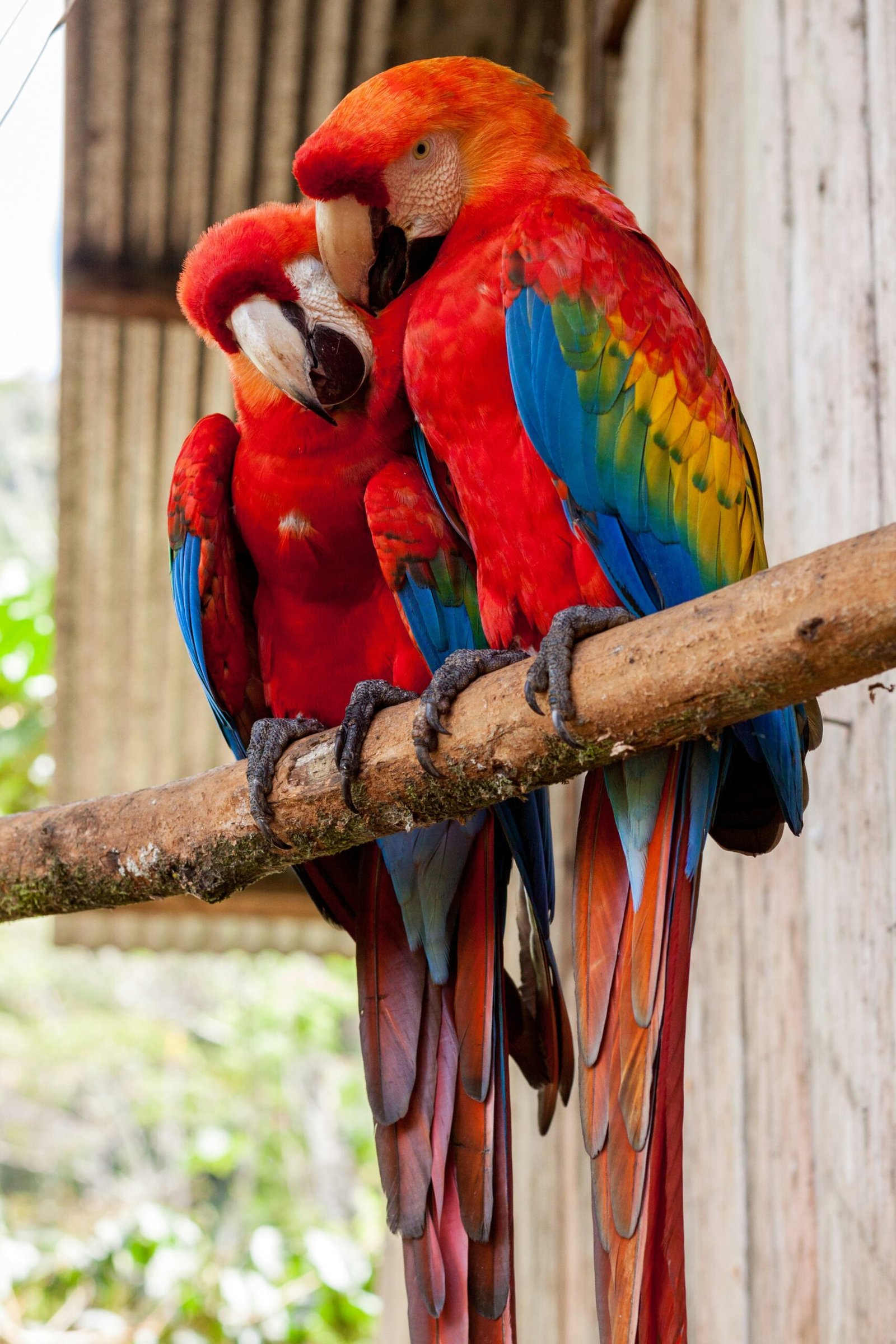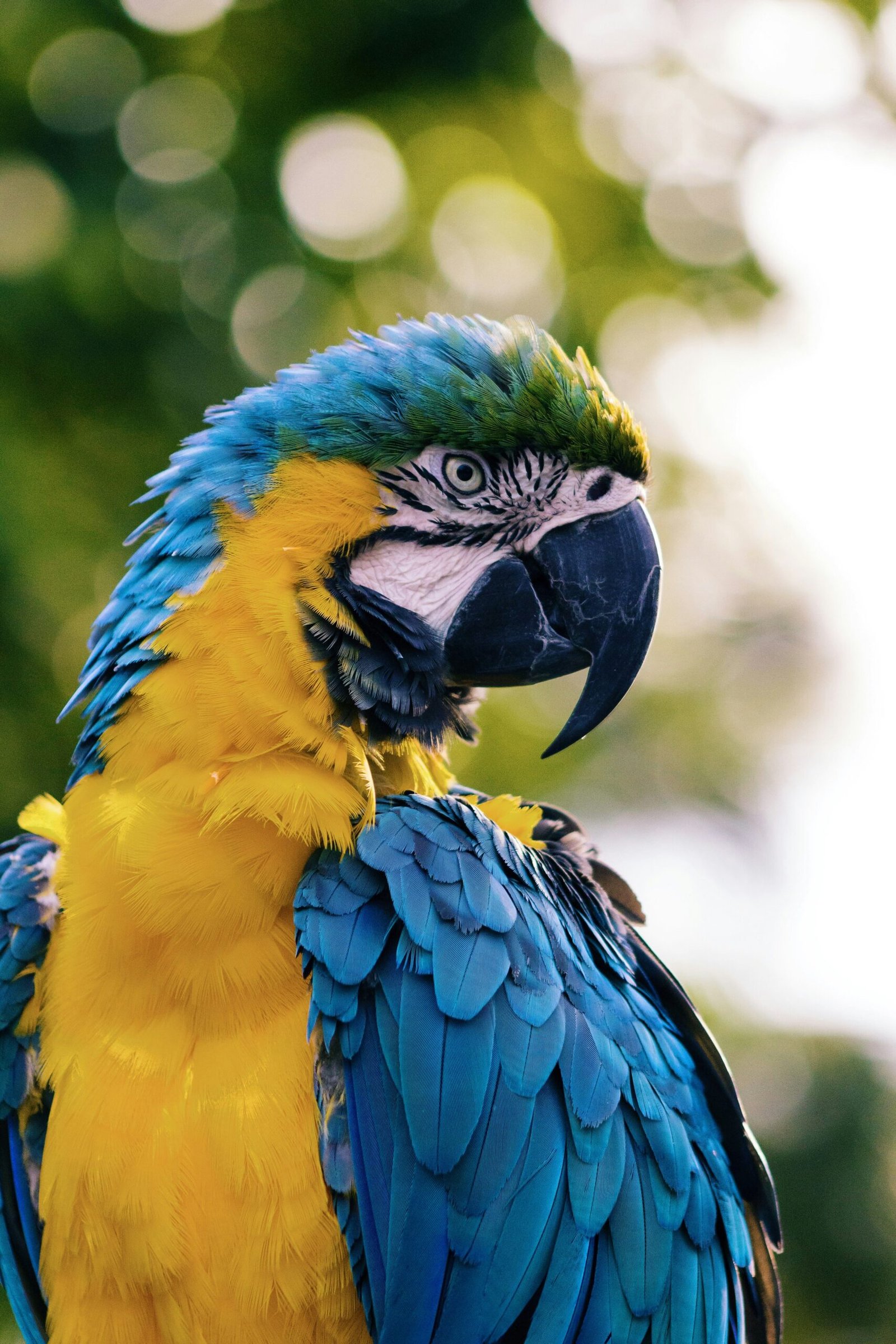Quaker parrots, also known as Monk Parakeets, are captivating birds that have gained popularity as household pets due to their vibrant personalities and striking appearance. Originating from South America, particularly Argentina and its surrounding regions, these parrots are recognized for their green plumage, grayish chest, and blue-tinted flight feathers. Typically, Quaker parrots measure around 11-12 inches in length and weigh between 90-120 grams, making them a medium-sized bird within the parrot family.
Quaker parrots are distinguished by their high intelligence and social nature. These birds are known to form complex social structures in the wild and are equally interactive in captivity. Their cognitive abilities rival those of larger parrot species, enabling them to learn a variety of tricks and behaviors. This high level of intelligence, combined with their innate curiosity, makes Quaker parrots ideal candidates for training.
Training a Quaker parrot is not merely a means to showcase their skills; it is essential for their overall well-being. Engaging in regular training sessions can significantly enhance their mental stimulation and physical activity, thereby preventing boredom and associated behavioral issues such as feather plucking and excessive screaming. Furthermore, trained behaviors can facilitate easier handling and care, fostering a harmonious relationship between the parrot and its owner.
This blog post aims to explore the best methods for training a Quaker parrot. It will delve into various techniques such as positive reinforcement, clicker training, and establishing a consistent routine. Additionally, it will provide tips on addressing common challenges faced during the training process. By understanding and implementing these methods, bird owners can ensure that their Quaker parrots lead enriched, healthy, and fulfilling lives.
Building Trust and Bonding
Establishing a strong bond with your Quaker parrot is the cornerstone of effective training. Trust is fundamental, and the best methods for training a Quaker parrot begin with creating a secure and affectionate environment. Spending quality time with your bird is crucial. Engage in activities that allow your parrot to become accustomed to your presence, such as sitting near its cage and conversing softly. This gentle interaction helps the bird recognize you as a non-threatening companion.
Offering treats is another effective method to build trust. Use the bird’s favorite snacks to encourage positive interactions. When the parrot approaches you for a treat, it signals a growing comfort level. It is essential to employ a calm and patient approach throughout this period. Sudden movements or loud noises can startle the bird, disrupting the trust-building process.
Monitoring your Quaker parrot’s body language is vital to understanding its readiness for more structured training. Signs of comfort include relaxed feathers, a curious demeanor, and voluntary engagement. Conversely, if the bird appears fluffed up, agitated, or avoids interaction, it may indicate the need for more time in the trust-building phase.
By prioritizing these initial steps, you lay a solid foundation for more formal training. For additional insights on bonding techniques, refer to this comprehensive guide on bonding techniques from a reputable bird care website. Cultivating a trusting relationship with your Quaker parrot not only enhances training outcomes but also strengthens the overall bond between you and your feathered friend.
Positive Reinforcement Training
Positive reinforcement is a highly effective method for training a Quaker parrot, relying on rewarding desired behaviors to encourage their repetition. This approach leverages the natural inclinations of Quaker parrots to seek pleasurable experiences, making it a humane and efficient training method. By providing treats, praise, and toys as rewards, trainers can shape the behavior of their parrots in a positive and supportive manner.
To implement positive reinforcement training, it is crucial to identify what motivates your Quaker parrot. Common rewards include small treats such as pieces of fruit, seeds, or nuts, verbal praise, and favorite toys. The key is to deliver these rewards immediately after the desired behavior occurs, ensuring the parrot makes a clear connection between the action and the reward.
Begin with simple commands and tricks to lay a strong foundation. One fundamental command is ‘step up,’ which involves the parrot stepping onto your finger or hand. To teach ‘step up,’ gently press your finger against the lower chest of the parrot and use the verbal cue “step up.” As soon as the parrot complies, provide a treat and verbal praise. Another easy trick is ‘wave,’ where the parrot lifts one foot in response to a cue. Hold a treat slightly above the parrot’s foot, say “wave,” and reward the parrot when it raises its foot.
Consistency and timing are critical in positive reinforcement training. Consistently using the same cues and rewards helps the parrot understand what is expected. Equally important is the timing of the reward; it must be given immediately after the desired behavior to reinforce the connection. Over time, your Quaker parrot will learn to associate specific behaviors with positive outcomes, leading to a well-trained and happy companion.
For an in-depth guide on positive reinforcement training, consider visiting this trusted avian expert.
Clicker Training
Clicker training is a highly effective method for teaching Quaker parrots new behaviors and commands. This technique employs a handheld clicker device to produce a distinct clicking sound, which acts as a marker for desired behaviors. The initial step in clicker training is known as ‘charging’ the clicker. This involves creating an association between the sound of the clicker and a positive reward, such as a treat or verbal praise.
To charge the clicker, start by clicking the device and immediately offering the Quaker parrot a reward. Repeat this process several times in short sessions until the bird begins to associate the clicker sound with the forthcoming reward. Once the clicker is charged, it can be used to reinforce specific behaviors.
When training specific tricks or commands, observe your Quaker parrot and click the instant it performs the desired action. Immediately follow the click with a reward. For example, if you are teaching the parrot to step up onto your hand, click the moment its foot touches your hand and then offer a treat. This clear and immediate feedback helps the bird understand which behavior is being rewarded, thereby facilitating faster learning.
The benefits of clicker training are manifold. It provides a consistent and clear form of communication between the trainer and the bird, reducing confusion and frustration. Additionally, the precision of the clicker allows for quicker reinforcement of desired behaviors, promoting more efficient learning.
For a more comprehensive guide on clicker training for Quaker parrots, including step-by-step instructions and expert tips, you can watch this instructional video on clicker training for birds.
Socialization and Interaction
Socializing a Quaker parrot is a crucial aspect of its training, as it helps prevent common behavioral issues such as aggression and fearfulness. Proper socialization involves gradually introducing the bird to new environments, people, and other pets to ensure it becomes well-adjusted and confident. When introducing your Quaker parrot to new surroundings, start with small, controlled environments, allowing the bird to explore at its own pace. This gradual exposure helps the parrot build trust and reduces anxiety.
Meeting new people should also be a slow and patient process. Encourage family members and frequent visitors to interact with the bird in a calm and gentle manner, offering treats and speaking softly. This positive reinforcement helps the parrot associate new faces with pleasant experiences. If you have other pets, ensure that initial interactions are supervised and that the parrot feels safe. Over time, these controlled introductions can lead to harmonious relationships between your Quaker parrot and other household animals.
Creating a stimulating environment is another essential component of socialization. Provide a variety of toys and activities to keep your parrot mentally and physically engaged. Rotate toys regularly to maintain interest and prevent boredom. Interactive play sessions with the bird, such as puzzles and foraging games, can also enhance cognitive development and strengthen your bond with your pet.
Social interaction plays a vital role in the overall happiness and health of a Quaker parrot. Regular interaction with family members and other pets can prevent feelings of loneliness and stress, which are common in these highly social creatures. A well-socialized parrot is more likely to be friendly, curious, and well-behaved, contributing to a more enjoyable companionship.
For more detailed insights on parrot socialization, you can refer to this article by a leading avian behaviorist.
Teaching Tricks and Commands
Training a Quaker parrot to perform tricks and obey commands requires patience, consistency, and a methodical approach. To begin with, it’s essential to establish a strong foundation with basic commands such as ‘step up,’ ‘step down,’ and ‘come here.’ These commands not only facilitate easier handling of your parrot but also create a basis for more complex tricks.
For the ‘step up’ command, hold a perch or your finger horizontally in front of the bird and gently press against its lower chest. As the parrot steps onto the perch, say “step up” and reward it with a treat. Repetition and positive reinforcement are key. Similarly, the ‘step down’ command involves placing the bird on a perch, saying “step down,” and rewarding compliance. ‘Come here’ can be taught by showing the parrot a treat, calling it by name followed by the command, and rewarding it when it comes to you.
Once your Quaker parrot is proficient with these basics, you can introduce more intricate tricks like ‘turn around’ and ‘fetch.’ For ‘turn around,’ hold a treat in front of the bird’s beak and slowly move it in a circular motion. As the parrot follows the treat and completes the circle, say “turn around” and give the treat. Consistent practice will help the parrot associate the command with the action.
Teaching ‘fetch’ can be more challenging. Start by encouraging your parrot to pick up a small object. When it does, say “fetch,” and reward it. Gradually increase the distance you toss the object, prompting the parrot to bring it back to you for a reward each time. Breaking down each trick into manageable steps and maintaining a regular practice schedule are crucial for success.
Common challenges in Quaker parrot training include short attention spans and reluctance to perform. Overcome these hurdles by keeping training sessions short and engaging, using high-value treats, and remaining patient. For a comprehensive list of parrot tricks and additional training tips, visit [a popular bird training website](https://www.example.com).
Addressing Behavioral Issues
Quaker parrots, known for their intelligence and playful nature, can sometimes exhibit behavioral issues such as biting, screaming, and feather plucking. Understanding the root causes of these behaviors is essential for effective training. Common triggers include stress, boredom, and lack of socialization.
Biting in Quaker parrots often results from fear or territoriality. It’s crucial to identify what prompts this reaction. Gradual desensitization to the triggering stimulus, alongside positive reinforcement, can significantly reduce biting incidents. Offering treats for calm behavior and using a calm, reassuring voice can help build trust.
Screaming is another prevalent issue, usually stemming from boredom or a desire for attention. Providing ample mental stimulation through toys and interactive play can mitigate excessive vocalizations. Establishing a routine and rewarding quiet behavior with attention or treats can also aid in curbing this habit.
Feather plucking is often a sign of stress or medical issues. Ensuring a stimulating environment with plenty of toys and opportunities for exercise can alleviate stress-related plucking. Regular vet check-ups are essential to rule out any underlying health concerns. If stress is the primary cause, creating a calm and predictable environment can be beneficial.
Addressing these behavioral issues requires patience and consistency. Positive reinforcement is key; rewarding desirable behavior encourages repetition. Avoid punishment, as it can exacerbate stress and behavioral problems.
For detailed strategies on managing Quaker parrot behavior, consider consulting reputable resources such as this guide on managing parrot behavior problems from an avian veterinary expert.
Keeping Training Sessions Fun and Engaging
Effective training methods for Quaker parrots revolve around maintaining a fun and engaging environment. The key to success lies in varying activities and rewards, incorporating playtime, and ensuring sessions are brief and positive. This approach not only keeps the parrot stimulated but also strengthens the bond between the bird and the trainer.
Diverse activities are essential to prevent monotony. Rotate between different training exercises, such as teaching new words, tricks, or commands. This variety keeps the parrot mentally engaged and eager to participate. Additionally, using a mix of rewards like favorite treats, verbal praises, and affection can enhance motivation. By understanding and catering to your parrot’s preferences, you can maintain their interest and enthusiasm.
Playtime is another integral element of an effective training session. Quaker parrots are naturally playful, and integrating toys or playful interactions into the training can make the experience enjoyable. For instance, incorporating fetch games or puzzle toys can turn a training session into a delightful game, making learning feel less like a chore and more like fun.
It is crucial to keep training sessions short, ideally between 10 to 15 minutes. This duration is long enough to teach new concepts without overwhelming the parrot. Always aim to end sessions on a positive note with a successful task and a reward. This positive reinforcement leaves the parrot with a sense of achievement and eagerness for the next session.
Be mindful of signs of boredom or frustration, such as vocalizations, feather plucking, or loss of interest. Recognizing these signals early allows you to adjust the training pace or introduce new activities to re-engage your parrot. Keeping the parrot’s well-being in focus ensures a more productive and enjoyable training experience.
For more ideas on how to make training sessions enjoyable, you can explore this article on fun training games for parrots from a leading pet care site.
FAQs about Training Quaker Parrots
Training a Quaker parrot can be a rewarding experience, but it often comes with many questions. Below, we address some of the most frequently asked questions about the best methods for training a Quaker parrot, providing clarity and guidance for both new and experienced bird owners.
What is the best age to start training a Quaker parrot?
While Quaker parrots can be trained at any age, the ideal time to start is when they are young, typically around 3 to 4 months old. Younger birds are generally more adaptable and easier to train. However, older parrots can also learn new skills with patience and consistency.
How long should training sessions last?
Training sessions should be kept short to maintain your Quaker parrot’s interest and prevent fatigue. Aim for sessions lasting 10 to 15 minutes, two to three times a day. Consistency and regularity are crucial for effective training.
How should I handle setbacks during training?
Setbacks are a normal part of the training process. If your parrot shows signs of frustration or regression, take a step back and reassess your approach. Ensure you’re using positive reinforcement and patience. Sometimes, a short break can help reset the training process.
Is it possible to train older Quaker parrots or those with behavioral issues?
Yes, older parrots and those with behavioral issues can be trained, although it may require more patience and time. Understanding the root cause of any behavioral issues is essential. Consistent positive reinforcement and gradual training can lead to significant improvements. Consulting with an avian behaviorist can also be beneficial.
Why is ongoing learning and adaptation important in training?
Training is not a one-time event but a continuous process. Quaker parrots are intelligent and thrive on mental stimulation. Introduce new tricks and commands regularly to keep them engaged. Adapt your methods as you learn more about your parrot’s preferences and personality.
For further reading and expert advice, you may find these resources helpful:
Conclusion: The Journey of Training Your Quaker Parrot
In conclusion, training a Quaker parrot is a rewarding endeavor that requires patience, consistency, and positive reinforcement. Throughout this blog post, we have explored various effective methods, including the importance of creating a trust-based relationship with your feathered friend, utilizing clicker training, and establishing a structured routine. Each of these techniques plays a crucial role in shaping your Quaker parrot’s behavior and enhancing mutual understanding.
It is essential to remember that training is not an overnight process but an ongoing journey that demands dedication and perseverance. Celebrate the small victories as they come, recognizing that each step forward strengthens the bond between you and your Quaker parrot. Employing positive reinforcement, such as treats and praise, will encourage your parrot to repeat desired behaviors and motivate them to learn new tricks.
Consistency in training sessions will help reinforce learned behaviors and make the training process smoother. Even when progress seems slow, maintaining a routine will yield long-term benefits. Patience is key, as each Quaker parrot will progress at its own pace, and understanding this will help you manage expectations and stay motivated.
As you navigate the training journey, consider joining a supportive online community or forum for parrot owners where you can share experiences, seek advice, and find encouragement from fellow enthusiasts. Engaging with others who are also dedicated to the well-being of their Quaker parrots can provide valuable insights and foster a sense of camaraderie.
Ultimately, the journey of training your Quaker parrot is a fulfilling experience that not only promotes good behavior but also deepens the connection between you and your avian companion. Enjoy the process, cherish the moments of progress, and continue to build a loving and respectful relationship with your Quaker parrot.







